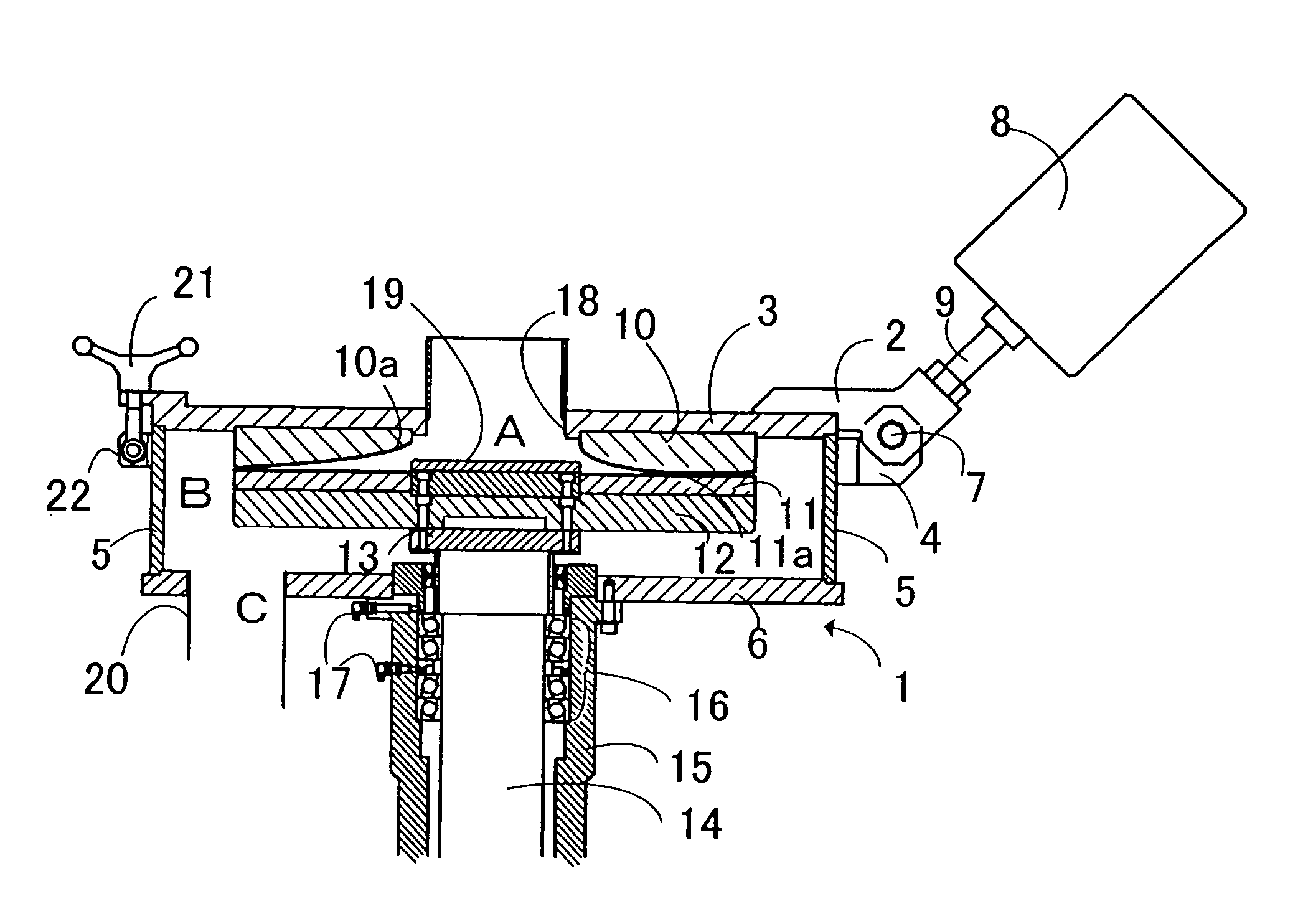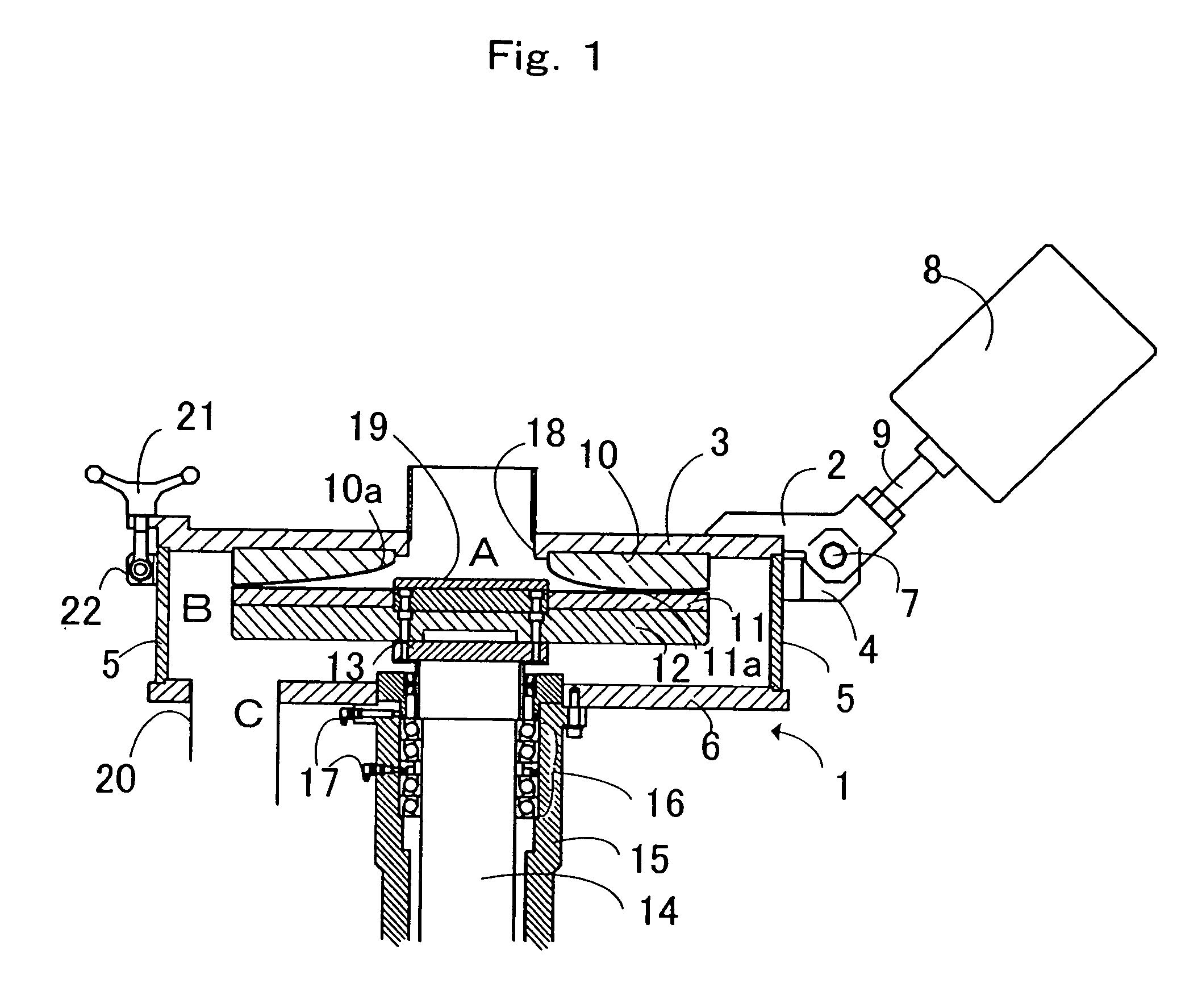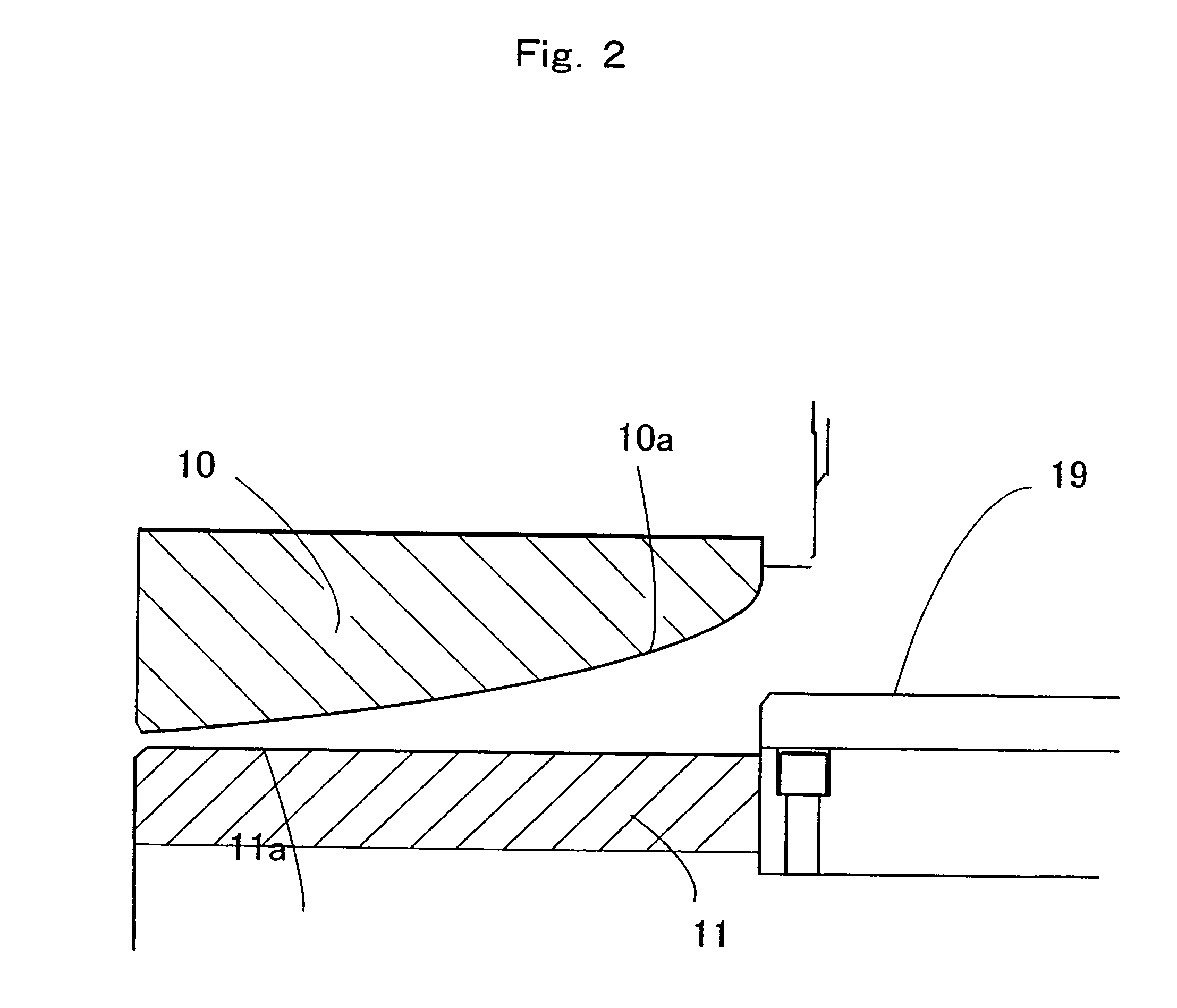Crusher
a crushing panel and sanding technology, applied in the field of crushing panels, can solve the problems of excessively large devices, prolonged crushing time, and difficult crushing at room temperature in such devices, and achieve the effects of reducing deformation, reducing pressure from crushing panels, and weakening the force applied to the material
- Summary
- Abstract
- Description
- Claims
- Application Information
AI Technical Summary
Benefits of technology
Problems solved by technology
Method used
Image
Examples
first embodiment
[0038] Preferable embodiments of the present invention are described below with reference to the drawings. FIGS. 1 and 2 show the present invention. The elements represented by the same symbols in the drawings have similar or the same structures, which provide similar or the same functions and effects.
[0039] In crusher body 1, upper cover 3, which is fixed to upper holder 2 by welding, bolting, or the like, and case 5 and lower cover 6, which are similarly fixed to lower holder 4, are structured so as to open and close freely by hinge 7. Upper holder 2 and lower holder 4 are connected to weight-adjusted balance weight 8 via handle 9 such that, when opened to a particular position, upper cover 3 does not close itself due to its own weight. Disk-shaped upper crushing panel 10 (diameter: about 500 mm) formed of materials such as carbon steel (for example, SKD-11), etc. is fixed to the lower side of the upper cover by means of bolts, etc. In this embodiment, upper crushing panel 10 has ...
second embodiment
[0052] In the second embodiment in FIG. 4, upper crushing panel 100 comprises first crushing blade face 100a, which is formed at a predetermined angle, and second crushing blade face 100b, which continues from first crushing blade face 100a at concentric circular boundary P and is formed at an angle different from the above predetermined angle.
[0053] Passage 23 for passing cooling water is provided within upper crushing panel 100. Passage 23 is preferably provided on the circumference side of crushing panel 100, where intense frictional heat is generated at the time of crushing. The cooling water supplied from water supply part 24, which is connected to passage 23, is circulated within crushing panel 100 to cool crushing panel 100 and crushing blade face 100a, and then discharged outside via water discharge part 25.
[0054] In FIG. 5, the passage for circulating cooling water is provided only in upper crushing panel 100, which is a fixed crushing panel. However, the present invention...
third embodiment
[0072] Furthermore, in the third embodiment, as shown in FIG. 12 (a plan view of an upper crushing panel, the rectangular blades not being shown for description) and FIG. 16, a group of three segments (for example, 100-1 to 100-3) is formed in a pattern such that the areas of the crushing blades having saw-toothed cross sections become gradually smaller in the direction of the circumference of upper crushing panel 100. The crushing blades formed in such a pattern enhance shearing capacity at the boundary between the crushing blades having saw-toothed cross sections and the crushing blades having rectangular cross sections, thus improving crushing efficiency.
[0073] FIGS. 13 to 15 show enlarged views of segments 100-1, 100-2, and 100-3 respectively, with (a) being a plan view, (b) being a side view seen in the direction of B, and (c) being an A-A enlarged sectional view. As shown in FIGS. 13 (b), 14 (b), and 15 (b), in each segment, the height of crushing blades having saw-toothed cro...
PUM
 Login to View More
Login to View More Abstract
Description
Claims
Application Information
 Login to View More
Login to View More - R&D
- Intellectual Property
- Life Sciences
- Materials
- Tech Scout
- Unparalleled Data Quality
- Higher Quality Content
- 60% Fewer Hallucinations
Browse by: Latest US Patents, China's latest patents, Technical Efficacy Thesaurus, Application Domain, Technology Topic, Popular Technical Reports.
© 2025 PatSnap. All rights reserved.Legal|Privacy policy|Modern Slavery Act Transparency Statement|Sitemap|About US| Contact US: help@patsnap.com



